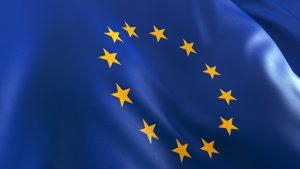As consumers increasingly seek innovative ways to enhance their financial health, monthly challenges have emerged as a popular tool for improving budgeting skills and increasing savings. These challenges, which emphasize small, achievable goals over longer periods, are proving effective for individuals aiming to tighten their financial habits and boost their savings accounts.
Understanding Monthly Challenges
Monthly challenges can take various forms, from simple savings goals to more intricate budgeting exercises. For example, a common savings challenge involves setting aside a designated amount of money each day for the month. This could start with a modest $1 on the first day, increasing incrementally up to $31 by the end of the month, resulting in significant savings by month-end. Alternatively, some challenges may focus on restrictions, such as a spending freeze, where participants avoid all non-essential purchases for 30 days.
According to a report by the National Endowment for Financial Education, over 60% of Americans feel stressed about their financial situation, highlighting the growing need for actionable strategies. Monthly challenges not only provide a structured approach to saving but also create a sense of community among participants eager to share their progress and tips.
Market Impact
The popularity of monthly challenges has resulted in financial apps and platforms integrating features specifically designed to facilitate these pursuits. For example, apps like Qapital and Acorns have developed dedicated functions that allow users to automate their savings in alignment with monthly goals. This trend underscores a broader movement toward financial technology (fintech), which has valued the global market at over $100 billion in 2022, with projections indicating further growth.
Financial advisors are beginning to recognize the effectiveness of these challenges as well, reporting that clients often find motivation and accountability when participating. “Monthly challenges empower users by converting financial planning into gamified experiences,” commented Jamie Hart, a financial advisor with over a decade of experience. “When individuals can visualize their goals as a challenge, they often experience greater success.”
Expert Opinion
Experts suggest that goal-setting is a crucial element of personal finance management, and monthly challenges can be an effective tool in this regard. Dr. Linda Schmidt, a behavioral finance researcher, explains, “The psychological benefits of achieving small milestones can lead to greater confidence in managing larger financial decisions. When people feel competent in their ability to save $10 over a day, that belief translates into long-term financial behavior.”
Furthermore, these challenges also foster positive conversations around finances in social circles, which is often a barrier for many. The sharing of stories, tips, and obstacles overcome can inspire others to engage with their financial health.
Background
The concept of micro-challenges is not new; however, its application in the realm of personal finance is gaining renewed interest. Influenced by social media challenges that encourage healthy lifestyle changes or creative projects, financial monthly challenges encourage similar community-driven experiences.
Historical data from the American Bankers Association shows that individuals who actively engage with their financial planning—whether through challenges, seminars, or educational resources—are more likely to improve their financial well-being over time. As of 2023, the average American household saved approximately 16% of their income, a slight increase from previous years, indicating a growing awareness surrounding financial responsibilities.
What’s Next
The future of monthly challenges looks promising as more individuals seek supplementary tools to fortify their financial situation. As interest continues to grow, personal finance educators and platforms are expected to cater to this demand, offering tailored challenges suited for various demographics. Moreover, financial literacy programs are beginning to adopt these methods as they gain traction within communities.
Participation in monthly challenges could also expand into workplace environments as part of employer-based financial wellness programs. Many companies are recognizing that improving employee financial health can enhance productivity and job satisfaction. Incorporating challenge frameworks into these programs can present an innovative solution to aid employees in managing personal finances effectively.
In conclusion, monthly challenges present an innovative and engaging method for individuals to take control of their financial situations. With the proliferation of financial technology facilitating these initiatives, more people may find the motivation they need to embark on their journey toward financial stability. As society evolves toward greater financial sophistication, embracing such methodologies could prove crucial for those looking to improve their overall financial health.







